order
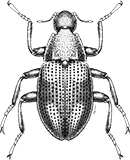
Coleoptera
“Adult Beetles”

Coleoptera
“Larval Beetles”

Diptera
“True Flies”

Ephemeroptera
“Mayflies”

Hemiptera
“True Bugs”

Lepidoptera
“Aquatic Caterpillars, Snout Moths”

Megaloptera
“Alderflies, Dobsonflies, and Fishflies”
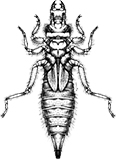
Odonata
“Dragonflies and Damselflies”

Plecoptera
“Stoneflies”

Trichoptera
“Caddisflies”
family
Gyrinidae
“Whirligig Beetles”
Genus Overview
This is a large and widespread genus with 41 species in North America. Adults are swimmers on the water surface (neuston) and divers in lentic habitats and slower parts of streams, scavengers and predators of small insects.
Adult members of the genus Gyrinus often emit a bad smell and taste in order to deter predators.
Adult members of the genus Gyrinus often emit a bad smell and taste in order to deter predators.
Characteristics
POLLUTION TOLERANCE
Southeast: 6.3 and higher
Midwest: 3.6 and higher
Mid-Atlantic: 4 and higher
0 = least tolerant, 10 = most tolerant
FEEDING HABITS
Engulfer / Predator
MOVEMENT
Diver
Swimmer
Swimmer
DISTRIBUTION
Widespread (east of the Rocky Mtns.)
HABITAT
Lentic-littoral
Lotic-depositional
Lotic-depositional
Diagnostic Characters
order
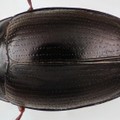
Elytra
family
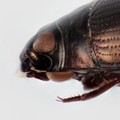
4 Eyes
genus
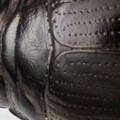
Scutellum
+ Expanded Character List
Order:
Adults with hardened forewings (elytra) covering the hind wings.
Family:
Short antennae with clubbed apices. Compound eyes divided into separate dorsal and ventral portions ("4-eyed" appearance).
Genus:
Dorsal and ventral compound eyes divided (“four-eyed” appearance). Upper eyes are separated from lateral margin of head by a distance equal to half the width of eye or more. Pronotum and elytron entirely glabrous (without hair). Each elytron with 11 conspicuous striae. Scutellum exposed, not covered or obscured. Meso- and metatarsal segments 2, 3, and 4 are much wider than long. Body relatively small, about 4-7 mm in length.
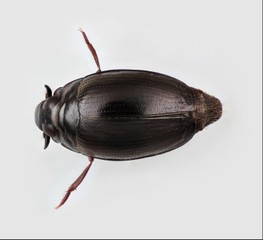
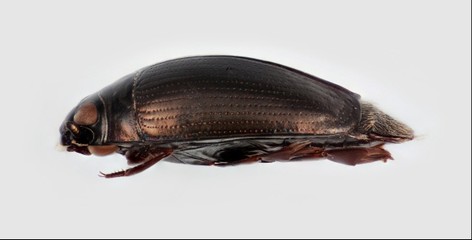
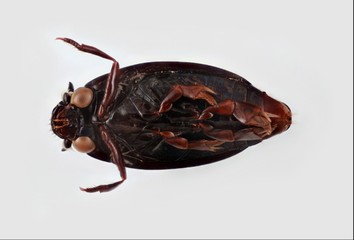
Dorsal
Lateral
Ventral



